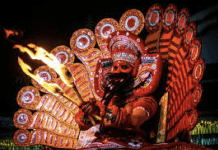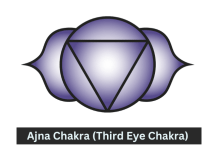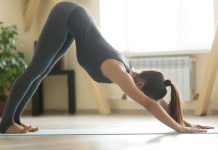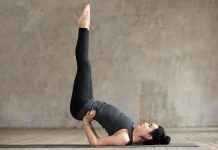
Paschimottanasana, often referred to as the Seated Forward Bend Pose, is a fundamental asana in the practice of yoga. Rooted in the ancient tradition of yoga, Paschimottanasana is a gentle yet powerful pose that offers numerous physical, mental, and spiritual benefits. As a forward bend that engages the entire body, this pose encourages introspection, flexibility, and a profound connection to the self. In this article, we will delve into the intricacies of Paschimottanasana, exploring its steps, benefits, variations, and the deeper dimensions it offers to practitioners.
Understanding Paschimottanasana:
Paschimottanasana is derived from the Sanskrit words “paschima,” meaning west or back of the body, “uttana,” meaning intense stretch, and “asana,” signifying posture. Translated as “Intense Back Stretch Pose,” this asana involves a deep forward bend, focusing on the elongation and flexibility of the posterior muscles.
Steps to Practice Paschimottanasana:
- Prepare: Begin by sitting on your yoga mat with your legs extended straight in front of you. Ensure your spine is erect and your pelvis is in a neutral position.
- Inhale and Extend: Inhale deeply, elongating your spine as you lift your arms overhead. Engage your core muscles gently to support your back.
- Exhale and Fold: On your exhale, begin to hinge forward from your hips, leading with your chest. Keep your back straight as you fold, maintaining the length in your spine.
- Reach and Hold: As you fold forward, extend your arms toward your feet. Reach for your toes, ankles, or shins, depending on your flexibility. If you’re just starting, it’s alright to bend your knees slightly.
- Maintain Length: Throughout the pose, focus on maintaining the length in your spine rather than trying to touch your toes. Your forehead should move toward your knees rather than your nose toward your shins.
- Breathe: Breathe deeply and evenly in the pose. With each inhale, find length, and with each exhale, gently deepen your fold.
- Hold and Release: Hold the pose for several breaths, gradually working on deepening the stretch. When you’re ready to release, inhale as you come up, leading with your chest.
Physical Benefits
- Improved Flexibility: Paschimottanasana stretches the entire back of the body, from the heels to the spine. Regular practice gradually increases flexibility in the hamstrings, calves, and lower back.
- Strengthened Spine: The forward fold helps to lengthen the spine, promoting better posture and alignment. It also gently stimulates the spinal nerves.
- Enhanced Digestion: The compression of the abdominal area massages the digestive organs, aiding in digestion and alleviating constipation.
- Reduced Stress and Anxiety: The calming effect of the pose, combined with mindful breathing, helps soothe the nervous system and reduces stress and anxiety.
Energetic and Mental Benefits
- Stimulation of Manipura Chakra: In yogic philosophy, Paschimottanasana activates the Manipura chakra, associated with personal power and self-confidence. The forward bend encourages self-reflection and self-awareness.
- Mind-Body Connection: Paschimottanasana promotes introspection and turning inward. This reflective quality helps cultivate mindfulness and a deeper connection to one’s body.
Modifications and Variations
- Use of Props: For those with tight hamstrings or limited flexibility, sitting on a folded blanket or bolster can elevate the hips slightly, making the pose more accessible.
- One-Leg Variation: To deepen the stretch on one side, you can bend one knee and bring the sole of that foot against the inner thigh of the opposite leg.
- Wide-Leg Forward Bend: In this variation, the legs are spread wide apart, allowing for a more extensive stretch of the inner thighs and groins.
Precautions and Contraindications
While Paschimottanasana (Seated Forward Bend) offers numerous benefits, it’s important to practice with mindfulness and consideration for your body’s limitations. Here are some precautions and contraindications to keep in mind:
Precautions:
1. Warm-Up: Always warm up your body before attempting Paschimottanasana. Engage in gentle stretches and movements to prepare your muscles for the forward fold.
2. Avoid Strain: Do not force yourself into a deep fold if it causes discomfort or pain. The pose should feel like a gentle stretch, not a painful tug.
3. Bend the Knees: If you have tight hamstrings or lower back issues, it’s advisable to bend your knees slightly during the forward fold. This prevents excessive strain on your lower back.
4. Use Props: Utilize props like blocks, straps, or cushions to modify the pose. These aids can help you maintain proper alignment and ease into the stretch gradually.
5. Breathing: Keep your breathing steady and smooth throughout the pose. Avoid holding your breath, which can increase tension.
Contraindications:
1. Back Injuries: Individuals with herniated discs, spinal injuries, or chronic back pain should avoid deep forward folds. Consult a healthcare professional before attempting Paschimottanasana.
2. Hamstring Injuries: If you have hamstring injuries, approach the pose cautiously. Modify the stretch by keeping your knees bent or using props to avoid straining the injured area.
3. Pregnancy: Pregnant individuals should perform this pose with caution and under the guidance of a qualified yoga instructor. Avoid deep folds that compress the abdomen.
4. High Blood Pressure: If you have high blood pressure, be cautious while folding forward. Instead, keep your torso more upright and avoid excessive compression of the abdomen.
5. Sciatica: People with sciatica should avoid deep forward bends, as they can exacerbate the condition. Instead, focus on gentle stretches that alleviate discomfort.
6. Recent Abdominal Surgery: If you’ve had recent abdominal surgery, avoid intense forward folding, as it could strain the surgical site.
7. Insomnia or Fatigue: Paschimottanasana has a calming effect on the nervous system. If you’re already experiencing insomnia or extreme fatigue, the pose’s deep relaxation might exacerbate these conditions.
Consultation: If you have any pre-existing medical conditions or concerns, it’s advisable to consult a medical professional or a certified yoga instructor before attempting Paschimottanasana. They can provide personalized guidance and modifications to ensure your safety and well-being.
Remember that yoga is a personal journey, and each body is unique. Listen to your body’s signals, practice mindfully, and approach Paschimottanasana with respect for your own limitations and needs.
In Conclusion, Paschimottanasana is a timeless yoga pose that embodies physical and mental well-being. As you incorporate this forward bend into your practice, you’ll experience increased flexibility, improved posture, and a sense of tranquility. Whether you’re a beginner or an experienced practitioner, Paschimottanasana offers a space for growth, both in your body and in your connection with your inner self.










































